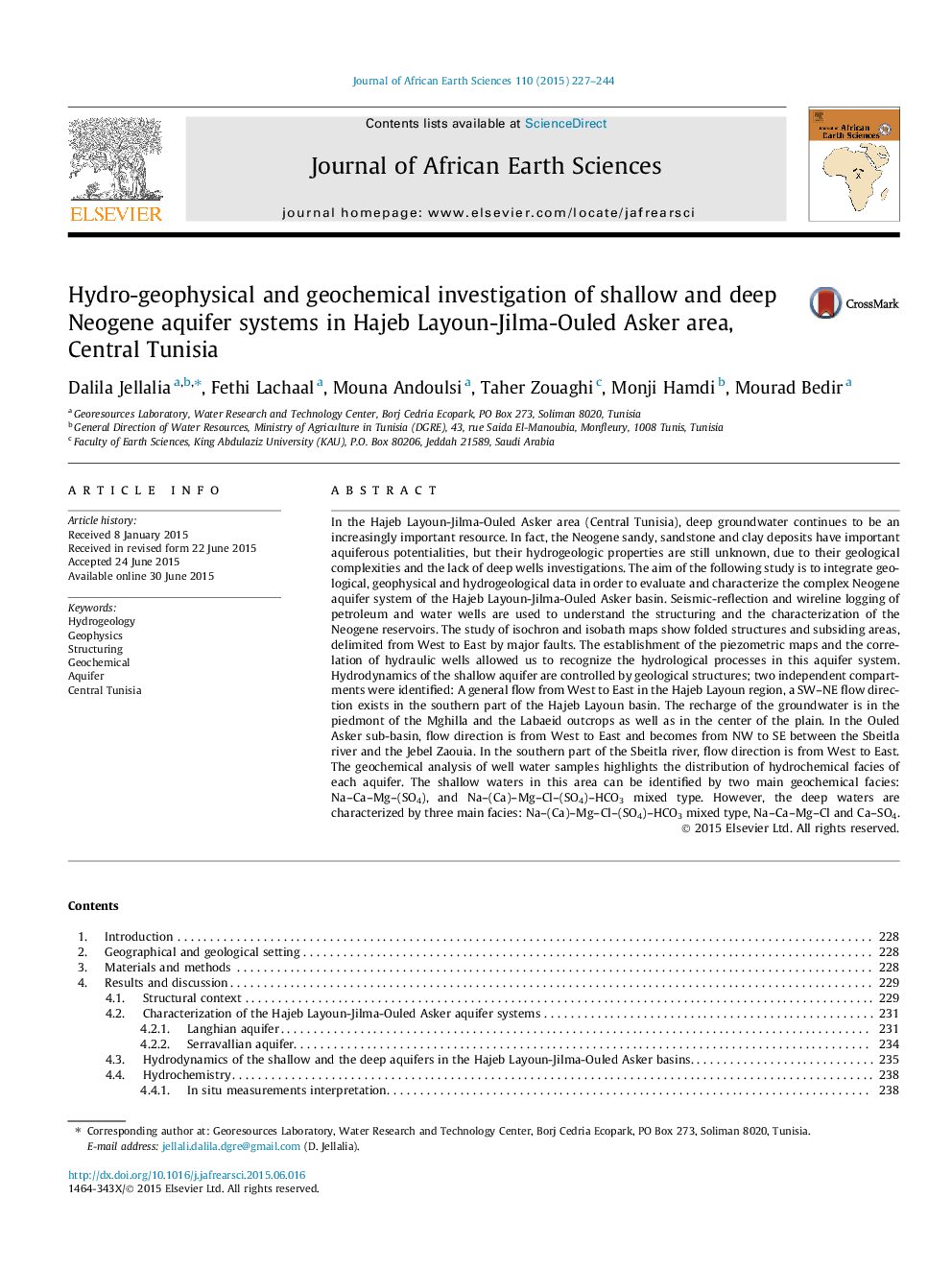| کد مقاله | کد نشریه | سال انتشار | مقاله انگلیسی | نسخه تمام متن |
|---|---|---|---|---|
| 4728600 | 1640197 | 2015 | 18 صفحه PDF | دانلود رایگان |

• Neogene aquifer geometry in Tunisia center is defined using hydrogeophysics data.
• Hydrodynamic and hydrochemical studies were carried out in study area.
• The relation between the groundwater qualities with structural compartmentalization.
In the Hajeb Layoun-Jilma-Ouled Asker area (Central Tunisia), deep groundwater continues to be an increasingly important resource. In fact, the Neogene sandy, sandstone and clay deposits have important aquiferous potentialities, but their hydrogeologic properties are still unknown, due to their geological complexities and the lack of deep wells investigations. The aim of the following study is to integrate geological, geophysical and hydrogeological data in order to evaluate and characterize the complex Neogene aquifer system of the Hajeb Layoun-Jilma-Ouled Asker basin. Seismic-reflection and wireline logging of petroleum and water wells are used to understand the structuring and the characterization of the Neogene reservoirs. The study of isochron and isobath maps show folded structures and subsiding areas, delimited from West to East by major faults. The establishment of the piezometric maps and the correlation of hydraulic wells allowed us to recognize the hydrological processes in this aquifer system. Hydrodynamics of the shallow aquifer are controlled by geological structures; two independent compartments were identified: A general flow from West to East in the Hajeb Layoun region, a SW–NE flow direction exists in the southern part of the Hajeb Layoun basin. The recharge of the groundwater is in the piedmont of the Mghilla and the Labaeid outcrops as well as in the center of the plain. In the Ouled Asker sub-basin, flow direction is from West to East and becomes from NW to SE between the Sbeitla river and the Jebel Zaouia. In the southern part of the Sbeitla river, flow direction is from West to East. The geochemical analysis of well water samples highlights the distribution of hydrochemical facies of each aquifer. The shallow waters in this area can be identified by two main geochemical facies: Na–Ca–Mg–(SO4), and Na–(Ca)–Mg–Cl–(SO4)–HCO3 mixed type. However, the deep waters are characterized by three main facies: Na–(Ca)–Mg–Cl–(SO4)–HCO3 mixed type, Na–Ca–Mg–Cl and Ca–SO4.
Journal: Journal of African Earth Sciences - Volume 110, October 2015, Pages 227–244